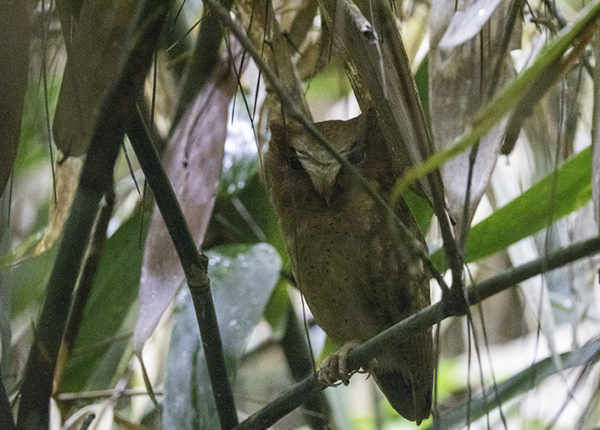Did You Know?
- This owl was first described as a species new to science in 2004.
- A Sri Lankan scientist named Deepal Warakagoda first discovered this species by its call and it took him six years before he was first able to find and see this species!
- This is the newest species to be described for Sri lanka.
How The Peregrine Fund is Helping
Though The Peregrine Fund doesn't work directly with Serendib Scops-owls, our efforts in scientific research, habitat conservation, education, and community development help conserve raptors on a global scale. We also supply literature to researchers from our avian research library, which helps scientists around the world gather and share important information on raptor conservation.
Where it Lives
The Serendib Scops-owl is endemic to Sri Lanka and found in rainforests in some wet zones of Sri Lanka including Sinharaja Forest Reserve, where it was first discovered for science.
What it Does
This lovely owl perches low in the forest. Its call is a series of quivering notes.
Why it Needs our Help
This species is considered Endangered because it has a small range and it is likely very vulnerable to habitat loss and degradation. Currently, scientists believe this species' population may be around 700 individuals or less.
What it Eats
There is still a lot to learn about the diet of the Serendib Scops-owl. However, since it is a small owl, it likely feeds on relatively small prey such as small lizards, frogs, and other vertebrates, and large insects.
Nests, Eggs, and Young
Scientists don't yet know anything about the breeding or nesting habits of this small owl.
Serendib Scops-owl and the World Center for Birds of Prey
Though the Serendib Scops-owl doesn't live anywhere near Boise, Idaho, you can still learn a lot about owls with a visit to our Velma Morrison Interpretive Center at The Peregrine Fund headquarters. The visitor center at our World Center for Birds of Prey includes owls among its avian ambassadors, including a Verreaux's Eagle-owl and a Western Screech-owl. This is a great chance to see owls up close and learn about the wonderful and interesting adaptations they have in order to survive in their respective habitats. There is also a touch table with owl feathers and other natural objects available for exploration.
References:
Fjeldså, J. (2020). Serendib Scops-Owl (Otus thilohoffmanni), version 1.0. In Birds of the World (J. del Hoyo, A. Elliott, J. Sargatal, D. A. Christie, and E. de Juana, Editors). Cornell Lab of Ornithology, Ithaca, NY, USA. https://doi.org/10.2173/bow.sersco1.01
Warakagoda, Deepal H. & Rasmussen, Pamela C. (2004): A new species of scops owl from Sri Lanka. Bulletin of the British Ornithologists' Club 124(2): 85–105.
https://en.wikipedia.org/wiki/Serendib_scops_owl









